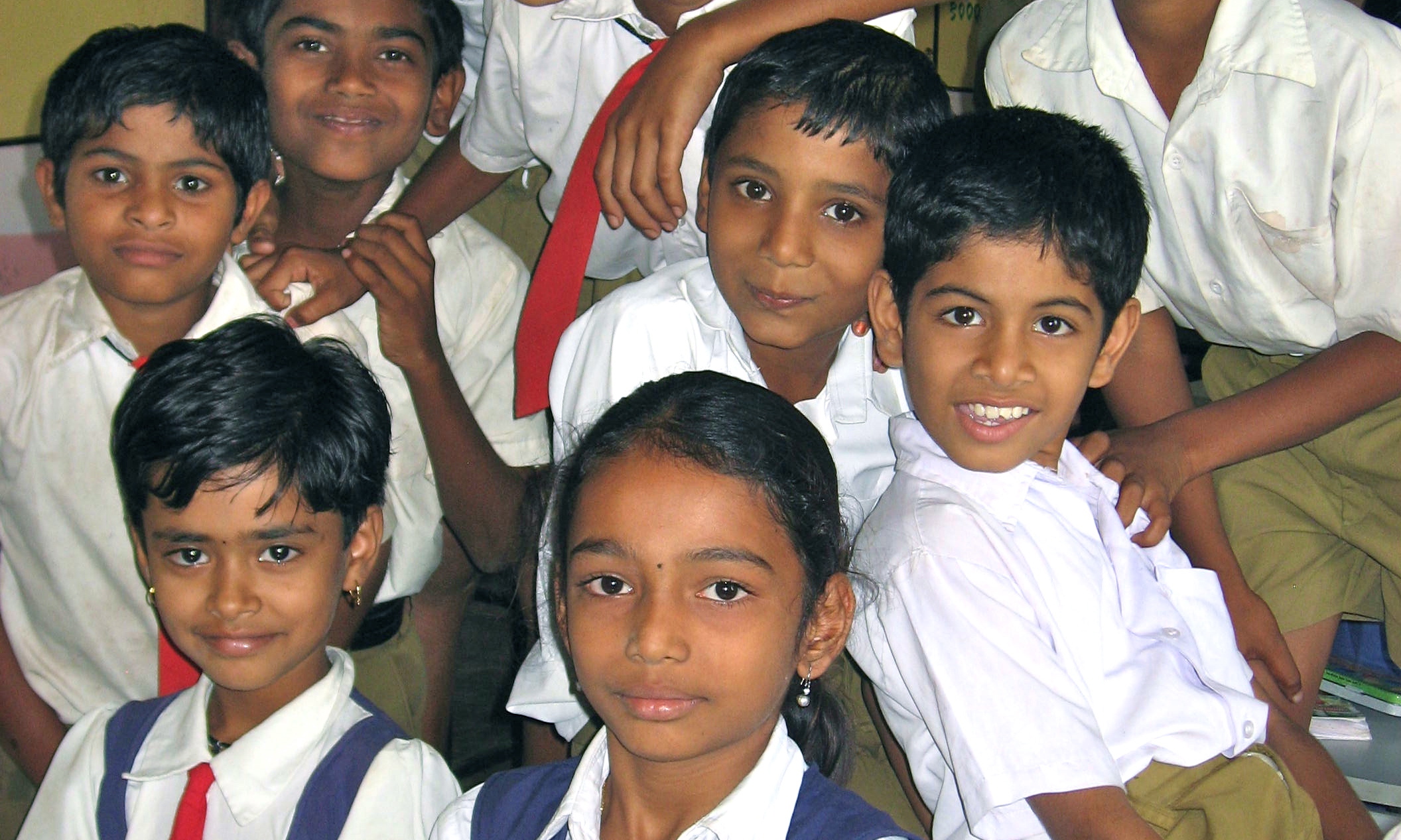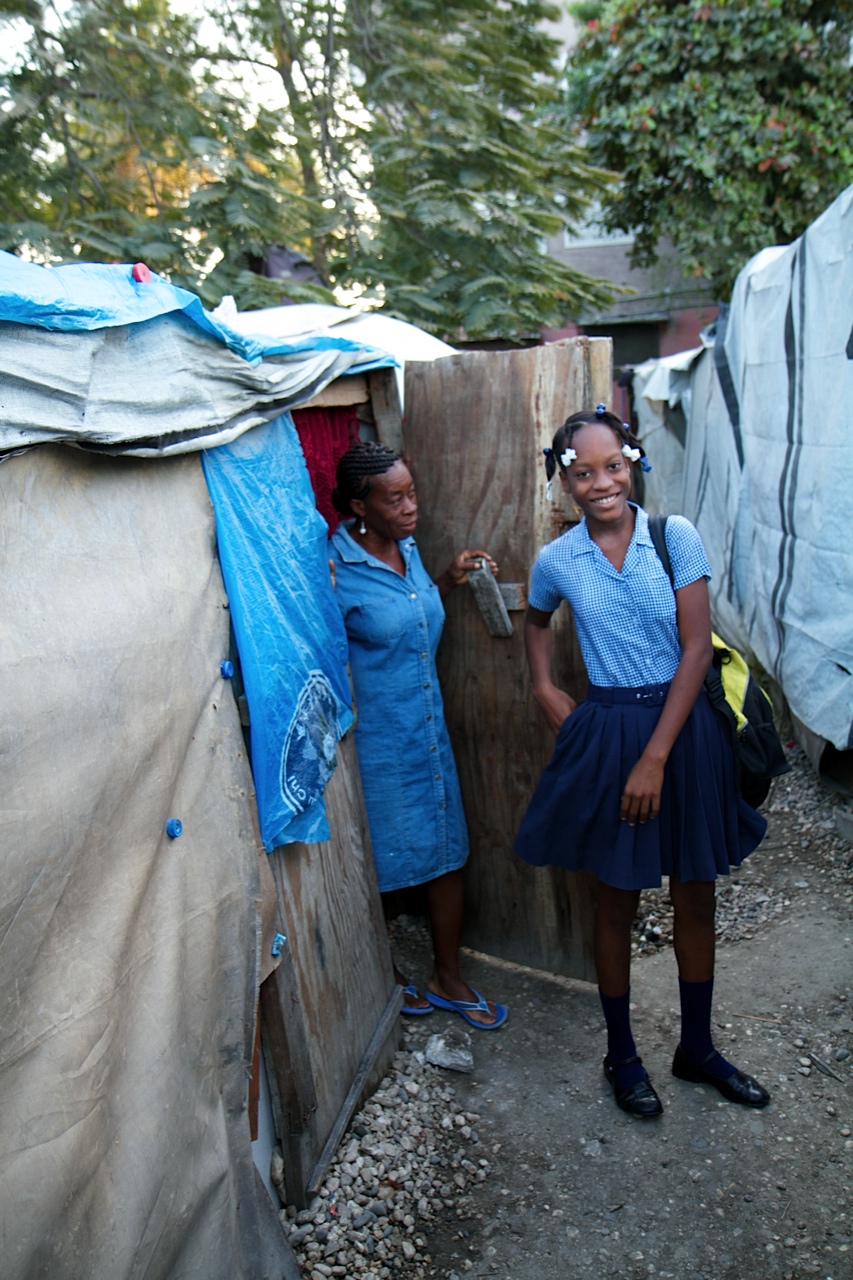
(A talk given at a panel discussion with Habiba Nosheen and Victoria Dunning at the George Washington University School of Media and Public Affairs, on March 6, 2012)
Good evening. I'd like to thank the George Washington School of Media and Public Affairs and the Pulitzer Center for this opportunity. It's wonderful to be here with Habiba and Victoria.
In thinking about ways to best draw attention to women and children at risk—who live with little or no access to healthcare, who are unschooled, who go hungry, who survive in the midst of war and conflict, or who face natural disasters but have no resources, I am reminded of the work of Anthony Shadid, The New York Times reporter who died in Syria a few weeks ago.
He had a wonderful way of capturing large truths by telling the stories of ordinary people. A recent tribute to him in The New York Times quotes from a talk he gave at the University of Wisconsin: "The best journalism is sometimes about footnotes—when we write small to say something big."
Anthony Shadid sets an example for us all.
Tonight I would like to talk about some of the children and young women I met in three countries: India, Bangladesh and Haiti.
India is a country with a 65 percent literacy rate for women, where 2 out of every 5 girls do not attend school. A country where in rural areas few houses and only one out of six schools has a toilet—where girls and women leave their homes at 4 a.m. to defecate in a field. Where women have no sanitary pads and must use unwashed rags.
It is no wonder that so many girls have dropped out of school.
But—despite the distressing statistics—sanitation and education standards in India are on the upswing—whether it's the nation-wide literacy rate, girls' school attendance, or the number of toilets in schools. Change is on the way.
A movement dubbed "No loo. No I do" encourages women to refuse to marry unless their husbands will provide them with a toilet.
Goonj, a local non-profit in New Delhi, is making reusable sanitary pads out of recyclable cloth for distribution in rural areas.
In a visit to Ralegan Siddhi, the village transformed by Anna Hazare, the Gandhi-like community organizer and anti-corruption leader, we saw that every home now has a toilet. The literacy rate there is100 percent and all girls (not just boys) attend school.
As I thought about writing a story, I knew that if the descriptions were too grim, the situation too dire, no one would read past the first paragraph. But, if I stressed that living conditions were changing I might engage my readers. I would show the "new India" by depicting a child who represented the two faces of her country, the traditional and the modern.
I chose a young girl named Rusda, from Ahmedabad, a large and growing city in Gujarat. She was bright and resourceful and had every intention of staying in school. When she grows up she will have many opportunities her mother never had.
Wanting to make sure readers could relate to Rusda, I focused first on what Rusda and many American children have in common.
Rusda spends a lot of time on the computer—and plays with Barbies. Her favorite food is Domino's pizza. On weekends she goes swimming at the local pool.
But, in other ways, her life is very different from that of American children and this was also an important part of the story. Rusda lives with her parents, brother and sister in a house with two rooms—a tiny kitchen and another room with only cushions and mats. It is here that the family watches television, eats and sleeps. Rusda's parents' marriage was arranged—her mother and father had seen photographs of each other but did not meet until the day they were married.
In neighboring Bangladesh, a country the size of Wisconsin, more than 50,000 children under five die—every year—from diarrhea-related diseases such as typhoid and cholera. But what may come as a surprise is that proper handwashing helps prevent these deaths—reducing the incidence of diarrhea-related diseases by half.
Spreading the word about handwashing is a very low-cost vaccine. Clean hands save lives.
Handwashing education campaigns have taken off in a big way. Teachers have made it part of their curriculum. All across the country schoolchildren are taught the importance of washing their hands with soap and keeping their fingernails cut. They also know that ashes (collected after cooking on a wood fire) can be used as a substitute if soap is not available. In villages throughout Bangladesh handwashing stations are being installed next to latrines. And it is the children who remind their parents that they have to wash their hands.
Young mothers—and children—are also taught a simple remedy for diarrhea: A rehydration solution made with salt, molasses, and water. Once a child is admitted to a hospital for diarrhea that child will not be released until the mother participates in nutrition and hygiene workshops, learns to make her own rehydration solution, and hears the benefits of handwashing.
In telling a story about children in Bangladesh I highlighted Global Handwashing Day – an annual event sponsored by Unicef, NGOs, private companies and the London School of Hygiene and Tropical Medicine. More than 200 million children in 80 + countries participated last year – 14 million of them in Bangladesh. The country set a Guinness World Record for the greatest number of people washing their hands at the same time.
I wrote about a second health-related issue as well: In Bangladesh rivers, lakes and ponds abound and the coastline is long. The monsoon season leads to flooding—every year rendering millions homeless. It is no wonder that drowning is the other leading cause of death for children. Forty-six children die every day from drowning.
A few years ago most children did not learn how to swim until they were in their teens; many girls never learned. But that is changing. The Bangladeshi government has started a SwimSafe program—training swim instructors, building bamboo structures in ponds to create safe swimming areas for the lessons, and encouraging girls (as well as boys) to participate. Through this program 550 centers have been built. In one year 320 instructors were trained and 130,000 children learned to swim—at a cost of $9 per child.
Stories about a swim program or handwashing in Bangladesh show there are signs of progress. But more importantly, they increase awareness of women and children—and of issues that readers might not know existed or to which they've paid little attention.
I will end with an example from Haiti, a country devastated by the January 12, 2010, earthquake. That afternoon more than 200,000 people were killed and many more lost their homes. All in less than 30 minutes.
Today, in the capital of Port-au-Prince, 500,000 people still live in tent camps. These camps are everywhere—bordering the main thoroughfares, occupying areas covered in rubble—on what was once a public park or on land where houses once stood—next to churches or across from the National Palace.
I wanted to write of the wreckage and of the loss of homes, material possessions, and human lives. But I also wanted to tell of the people's resilience, of their courage, and of the tenderness with which they care for each other.
Setting out to find a schoolgirl who lived in a camp, I visited a couple of public schools in downtown Port-au-Prince. Principals there were wary of negative publicity—as they would be here in Washington. I was sent to the Ministry of Education where I received permission to interview a student. When I returned to one of the schools, the principal did not look pleased, but she agreed to let me talk to the 6th grade teacher.
Mme. Berthude told me none of her students lived in a tent camp. I whispered that the principal had said many of the schoolchildren lived in camps. The teacher then turned to the class and asked: "Does anyone live in a camp?"
Eleven hands shot up. No one seemed embarrassed or ashamed. Living in a camp was simply a fact of life. It made no difference to the students whether their classmates slept in a house or a tent.
The teacher introduced me to a girl named Cynthia and explained that I wanted to tell her story to a U.S. audience. Cynthia pulled out her mobile phone and called her mother to ask permission—yes, she lived in a tent and had a cell phone.
That afternoon I followed her home to the tent camp and met with her mother. I needed to make sure she and her daughter were both comfortable sharing their life with a stranger. Cynthia's mother could not have been more welcoming.
The next day my husband and I went to the camp very early in the morning to record a typical school day. And here is Cynthia's story: See the video: http://pulitzercenter.org/reporting/cynthia
While talking to Cynthia and her mother I asked how long they thought they would be living in the tent camp. They answered that they did not know. It was clear they have no expectation of leaving.
Hearing that made me very sad.
And yet, Cynthia's laughter in the schoolyard, the diligence with which she does her homework, the genuine affection she has for her mother fill me with hope that her future holds promise, not of a dark and cramped tent but of a home with windows, not of complacency, but of strength to meet life's challenges.
Haitians love proverbs. Perhaps the most famous is "Beyond the mountain, there is another mountain"—a proverb made popular by Tracy Kidder in his book about Paul Farmer, the doctor who has done the most to change the face of public health and of Haiti.
Yes, in Haiti, there are always more mountains beyond mountains.
But the Haitians also live by another proverb: "Little by little the bird builds its nest."
Little by little, Haitians will rebuild—and, little by little, our stories can help make that possible.


